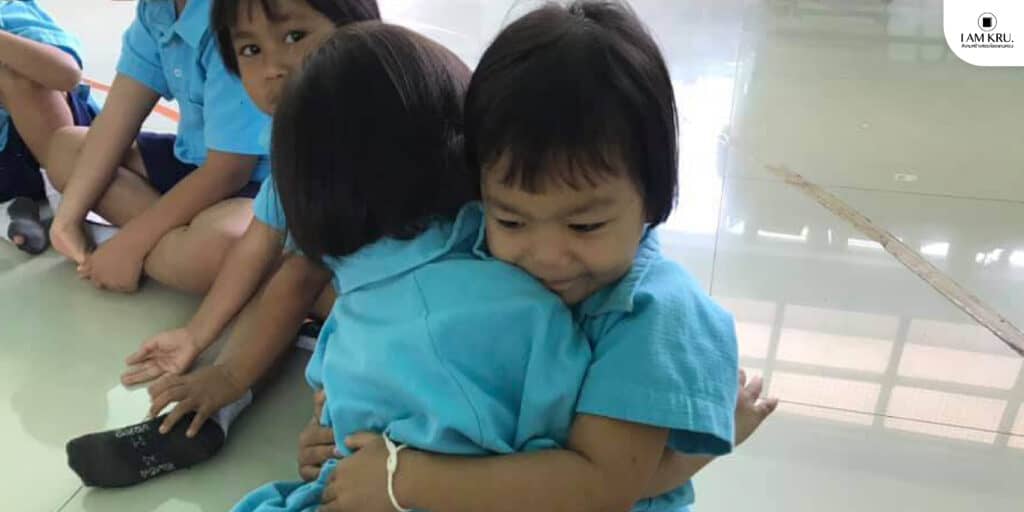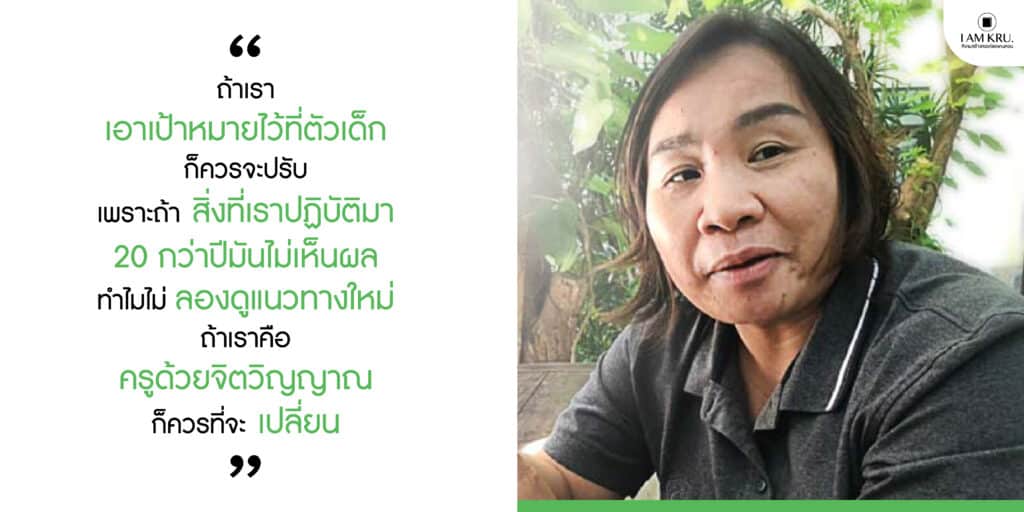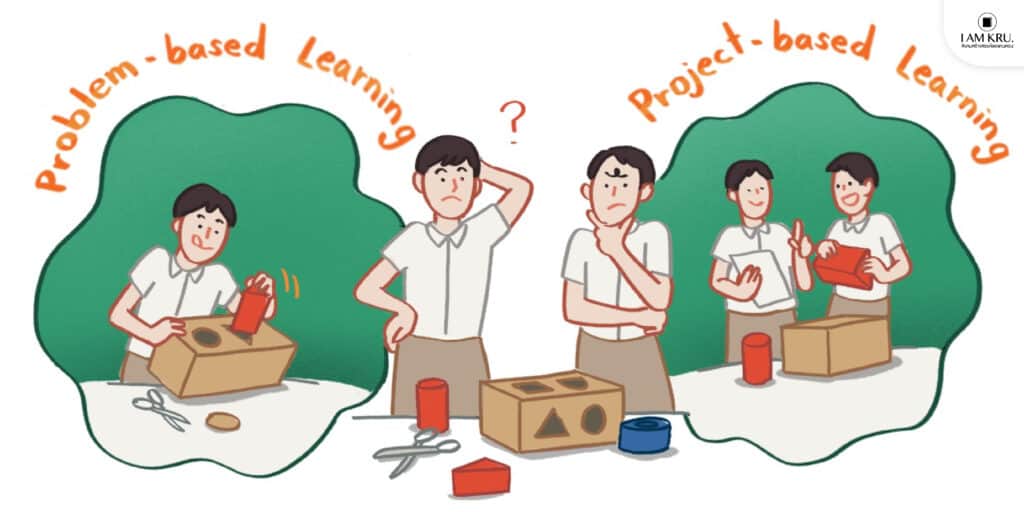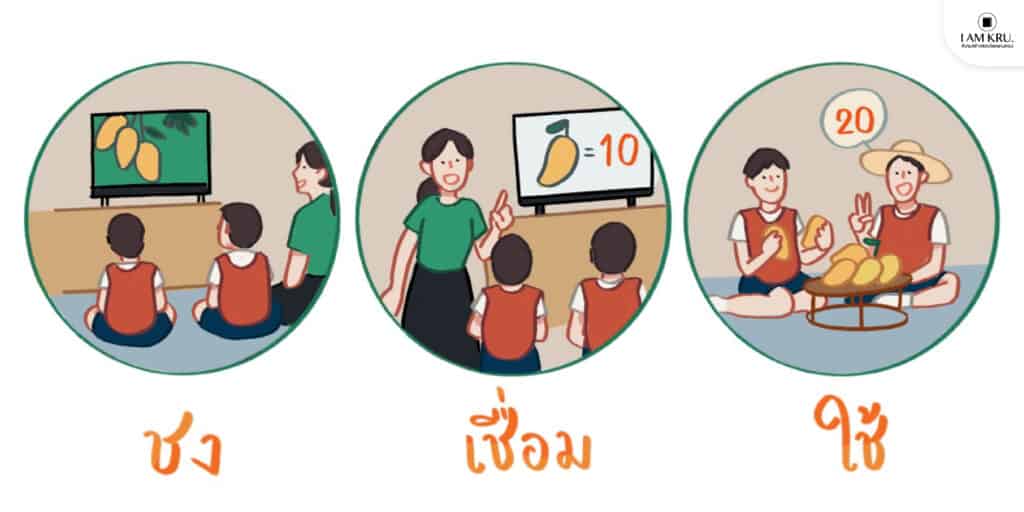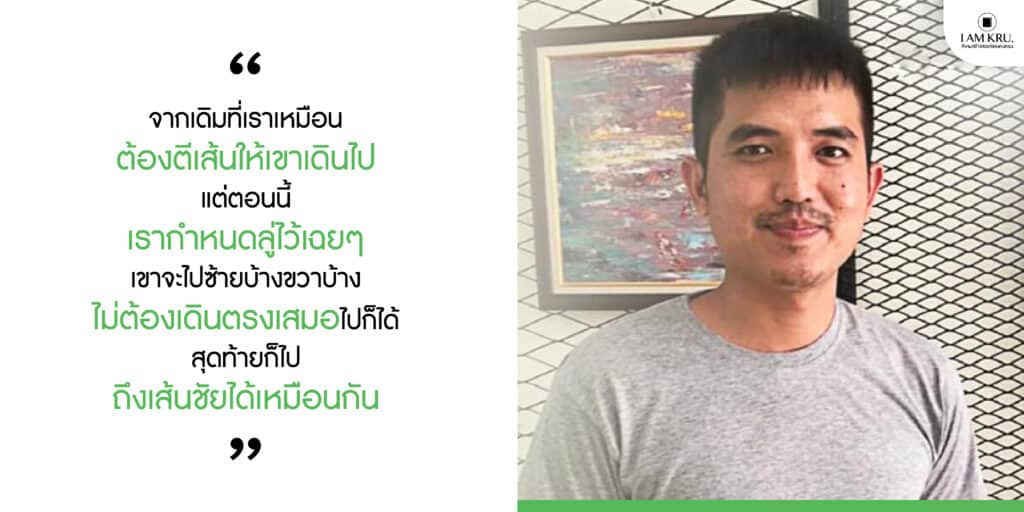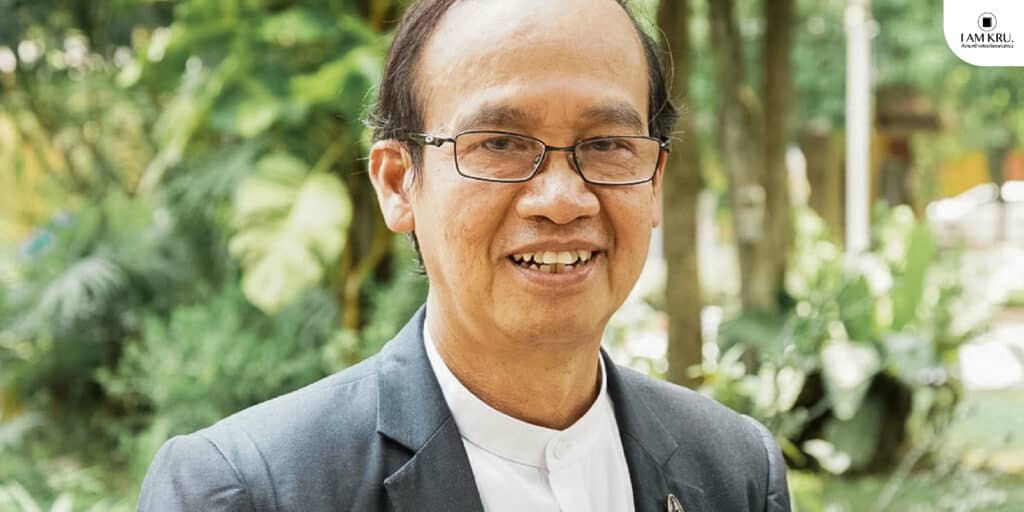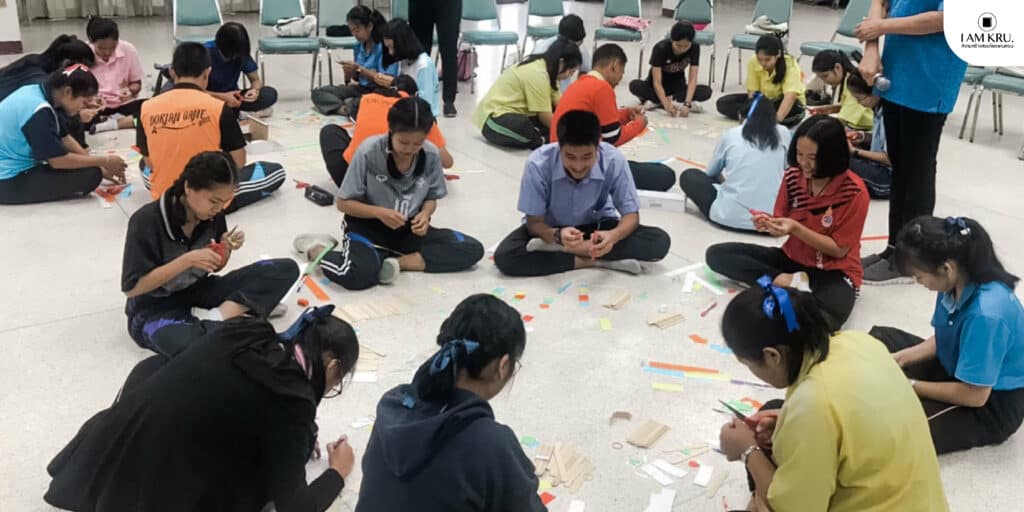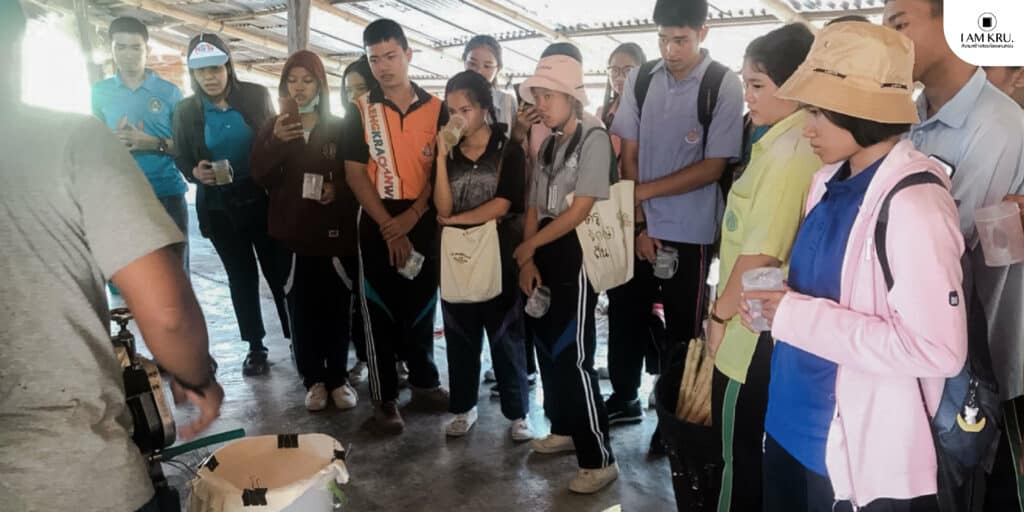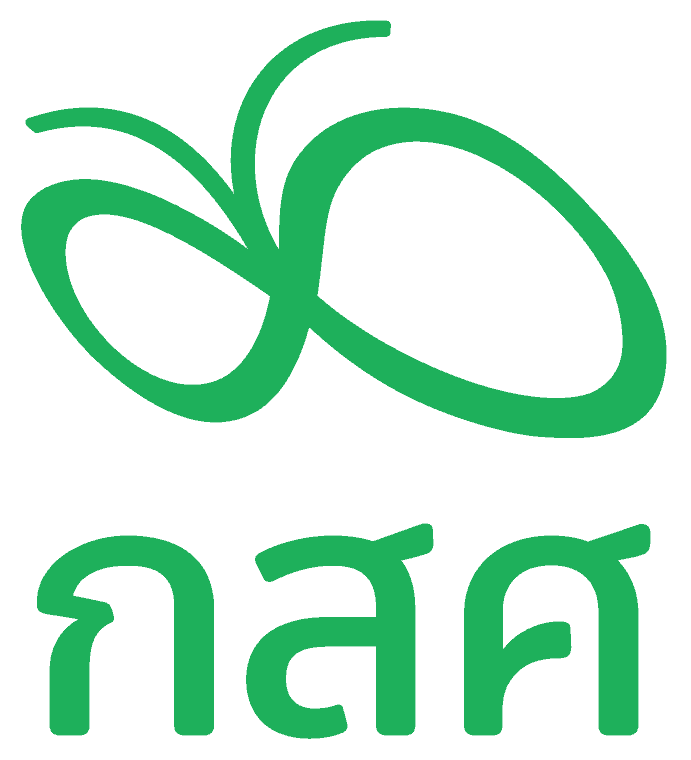“The goal of the project focuses on students’ learning outcomes. It does not only refer to educational development, but also whole person development or Whole Child Development”
said Professor Vichan Panich, M.D., chairman of the subcommittee on the direction of Teachers & School Quality Program (TSQP).
Educational inequality encompasses inequitable access to education and dimensions of quality education. Therefore, the goal of the Equitable Education Fund(EEF) to reduce educational inequality is driven by the development of every factor affecting students’ learning both inside and outside of school. The most crucial purpose is students’ ability to build up knowledge and take actions on their own. TSQP is then established to create the “school of the future” that provides students with accessibility to education that is most enjoyable and suitable to themselves as well as opportunities to constantly develop their skills throughout the entire process of learning.
TSQP: a role model for whole school approach
Dr. Udom Wongsingha, director of the Teachers and Schools development office of Equitable Education Fund (EEF) mentioned to the TSQP project that it is Whole School Approach which concerns self improvement, network development, system development and environmental management system supervised by a team of coaches and project supporters. ‘Team development’ is key to effectuate the best result for students.
Teachers of schools in TSQP will be trained to develop the 21st century necessary skills depending on the context of each school’s conditions as a means to pass on and exchange knowledge altogether. It is also a way to support evaluation research and further studies that will become a role model in effort to create “competency” of learners in which they can improve on knowledge, skills and attitudes.
Uplift quality of school by Whole Child Development
Prof. Vichan Panich shared his view on “uplift quality of school to reduce inequality” that the goal of the TSQP project is to develop medium-sized schools which are in charge of underprivileged students. Approximately 733 out of 8,000 schools, the first 10 percent of all, will be primarily developed following procedures planned by EEF.
“The goal of the project focuses on students’ learning outcomes. It does not only refer to educational development, but also whole person development or Whole Child Development which embraces the most important elements: knowledge, skills and attitudes. For instance, being honest, kind-hearted and self-confident. The three elements are interconnected. Therefore, it is essential to simultaneously evolve every aspect in the children, who will become the future of the country.”
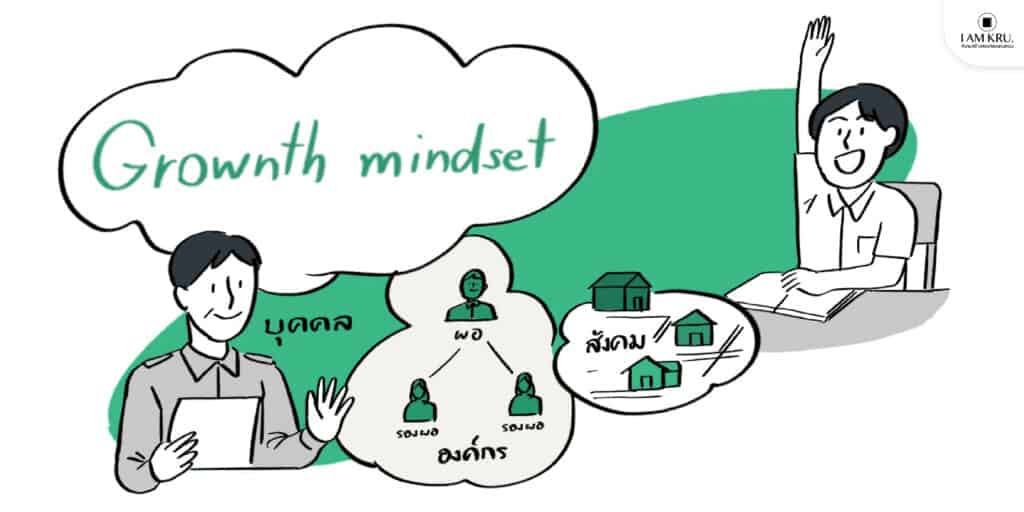
Alter method of measurement to build the “school of future”
Prof. Vichan Panich suggested, the key to the development of knowledge, skills, and attitudes of children is the attempt to create the school of the future. However, educational organizations often originally implemented old concepts to direct the future by unprogressive learning methods and success evaluation as opposed to the advancement of the world.
Educational institutions then have to engage in creating the “school of the future”. The vital factor to make progress on schools is to instill the notion of Growth Mindset in individuals, organizations and society. The development of the first 10 percent of the medium-sized schools, if accomplished, will be a model to the rest, and even to all 30,000 schools over the country.
Another subject matter in consideration of the TSQP project aiming to alter is the feature of student assessment in Thai schools following the Programme for International Student Assessment (PISA). The Thai means of student assessment need to become more universal. Otherwise, Thai education will only improve in terms of knowledge. Prof. Vichan Panich recommended each school to use creativity to connect with various network partners because the quality of education does not solely rely on schools and teachers. Similarly, being in good health does not rely mainly on doctors or hospitals. But the most important thing is ‘individual behavior’ that people manage to protect themselves from diseases. Learning, as a result, is a matter that every person should cooperate to improve it, not the schools alone.
From Classic Learning to Active Learning
The school of the future must invent a befitting learning for students. The best approach to develop student potential and enhance 21st century skills is to encourage them to think and produce their own work integrated with the understanding of lessons or a learning method called active learning.
“Today we need people who are thoughtful, dare to ask, dare to doubt and dare to do something different. Modern education has become extremely advanced. It is not only absorbing knowledge into the brain, but also thinking to create new knowledge in our brain by thinking, doing, and contemplating in which students will experience behavioral change and become happy and proud. Consequently, classic learning must be replaced by active learning” stated Prof. Vichan
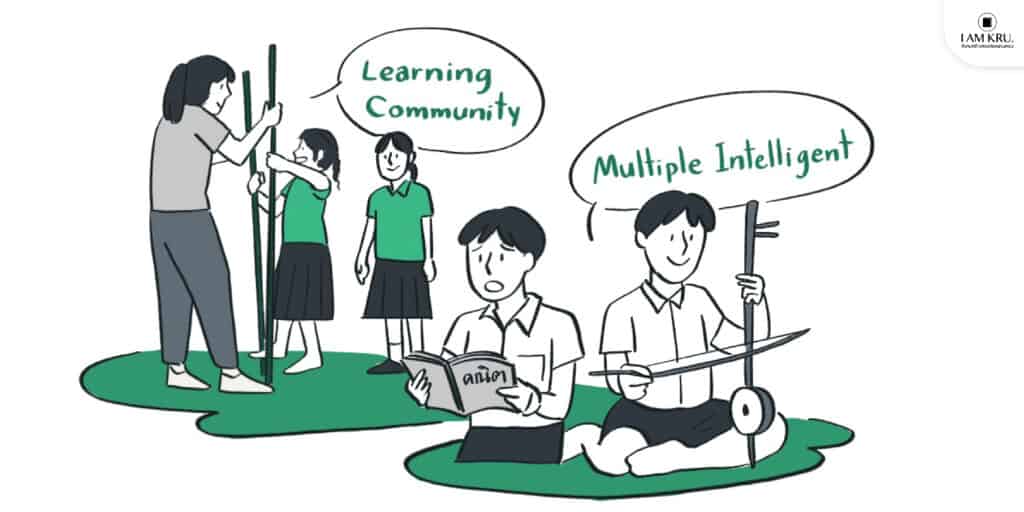
Learning community for all students
One factor to create the “school of the future” to equitably develop all children is to build a “learning community”. Because teachers cannot solitarily do all the work, school directors must be the leader in creating a process of knowledge exchange and a learning community that advocates students with an ecological space conducive to learning to motivate students’ interest and entertainment. In the second year, tools such as Formative Assessment and Development Evaluation are put into effect to support student potential development for the better.
Nevertheless, educational institutions need to recognize students’ Multiple Intelligence in terms of connecting it to solving educational inequality as some students intelligently prefer Arts and Music than Academics. For that reason, redesigned curriculum and teaching methods that cover all intelligences will be a strategy that educationally interests students.
Developing school quality to become the “school of the future” embraces a number of factors. Each of which has been processed and improved to maintain all students in the education system regardless of their families’ economic status. In addition, every student will not be determined by their proficiency in the matter of memorization and examination results. When there is equality in education, students will learn happily, possess 21st century skills, and consequently become productive citizens of the country in the future.
731
- Active Learning, Development Evaluation, Formative Assessment, Growth Mindset, Learning Community, Multiple Intelligence, TSQP, Whole Chlid Development, Whole School Approach, ดร.อุดม วงษ์สิงห์, ทักษะแห่งศตวรรษที่ 21, ศ.นพ.วิจารณ์ พานิช, โครงการพัฒนาครูและโรงเรียนเพื่อยกระดับคุณภาพการศึกษาอย่างต่อเนื่อง (TSQP)
- Active Learning, Development Evaluation, Formative Assessment, Growth Mindset, Learning Community, Multiple Intelligence, TSQP, Whole Chlid Development, Whole School Approach, ดร.อุดม วงษ์สิงห์, ทักษะแห่งศตวรรษที่ 21, ศ.นพ.วิจารณ์ พานิช, โครงการพัฒนาครูและโรงเรียนเพื่อยกระดับคุณภาพการศึกษาอย่างต่อเนื่อง (TSQP)
Writer

- เอื้อการย์ โรจนจิรไพศาล (มะแม้ว)
- นักเขียนผู้หลงรักการผจญภัยในเมือง ปรัชญาในชีวิตจริง และการไป Cafe Hopping ทั่วทุกมุมเมือง
